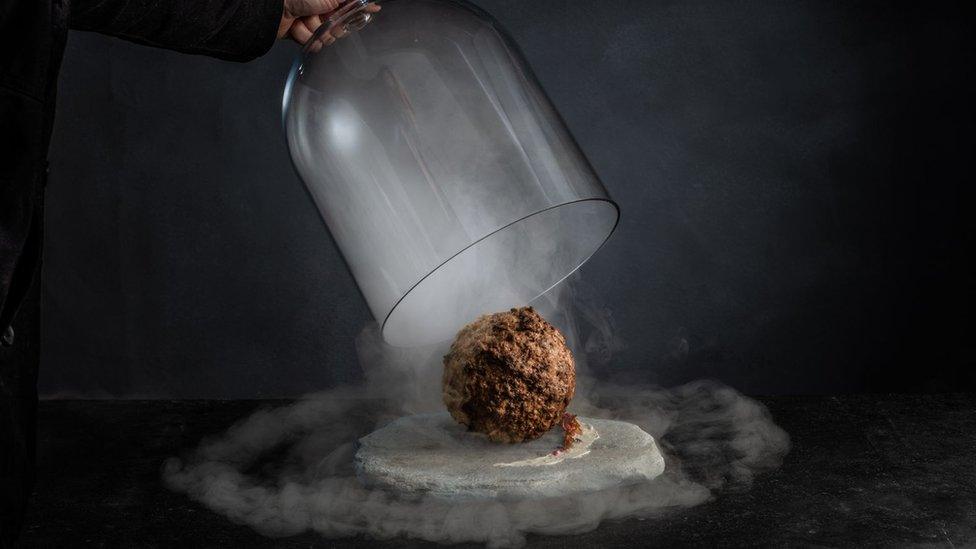Woolly mammoth meatballs grown in lab could be food of the future
- Published
- comments

'Wool' you be brave enough to try one? It actually looks quite tasty...
Are mammoth meatballs the food of the future?
The meatball, made using extinct woolly mammoth DNA, was revealed at the Nemo Science museum in the Netherlands.
In a world-first, Australian company Vow Foods has grown the meatball for a project looking for alternative ways to produce meat
That's because livestock - animals raised for meat production - are thought to contribute up to 14.5% of greenhouse gas emissions.
How is meat grown in a lab?
The first burger grown in a lab was created in 2013 and took a year to create
Animals are made up of stem cells, which form special tissue like nerve or skin cells.
Scientists worked out how to take cells from an animal and multiply them in a special container called a petri dish.
Eventually from one tiny muscle cell, tens of billions of cells can be grown. These join together to form muscle tissue.
Lots of strands of muscle tissue together can form 'meat'.
How do you make a mammoth meatball?
Mammoths went extinct 4,000 years ago
The company worked with Professor Ernst Wolvetang from the University of Queensland to grow the meat.
The meatball is actually a mixture of mammoth myoglobin - the muscle protein that gives meat its flavour - and elephant tissue.
Tim Noakesmith, who cofounded Vow Food told The Guardian: "We chose the woolly mammoth because it's a symbol of diversity loss and a symbol of climate change."
While the team may have managed to grow a meatball, they don't know how yummy it is just yet because no one's tried it!
Professor Wolvetang told the Guardian that if they made these meatballs again, they would have to make some changes to make sure it's tasty.
He said: "We haven't seen this protein for thousands of years, so we have no idea how our immune system would react when we eat it."
- Published27 March 2023
- Published26 March 2023
- Published15 March 2023
